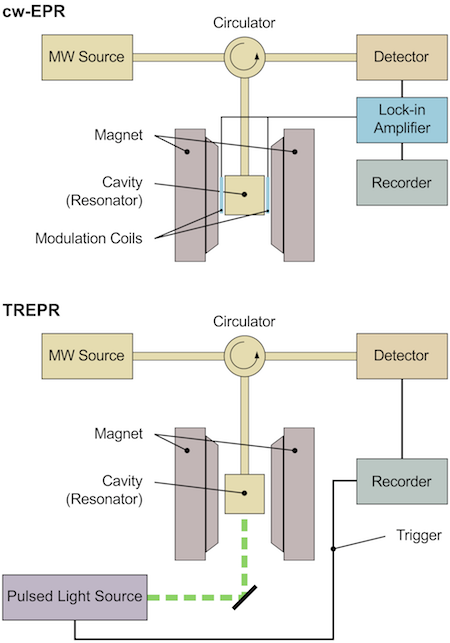User Tools
Sidebar
experiment:index
Experiment
Generally, there are different ways of detecting transient spin-polarised paramagnetic species with EPR. Probably the most common is to use a conventional cw-EPR spectrometer in a direct detection mode – such as not to restrict the achievable time resolution – and recording transients.

In principle, it is possible to use pulsed EPR techniques as well to obtain spectra of transient polarised species.
Literature
- Biskup, Till (2019): Structure-function relationship of organic semiconductors: Detailed insights from time-resolved EPR spectroscopy, Frontiers in Chemistry 7:10
- Forbes, Malcolm D.E.; Jarocha, Lauren E.; Sim, SooYeon; Tarasov, Valery F. (2013): Time-resolved electron paramagnetic resonance spectroscopy: History, technique, and application to supramolecular and macromolecular chemistry, Advances in Physical Organic Chemistry 47:1-83
- Weber, Stefan (2017): Transient EPR, eMagRes 6:255-270
experiment/index.txt · Last modified: 2019/06/15 10:12 by till
Except where otherwise noted, content on this wiki is licensed under the following license: CC Attribution-Noncommercial-Share Alike 4.0 International

